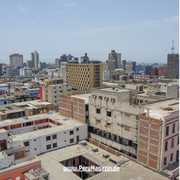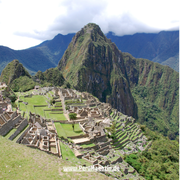
Peru , a country on the west coast of South America, is known for its rich cultural history, stunning landscapes, and diverse economy. From the majestic Andes to the Amazon rainforest, Peru offers a wide range of natural resources that form the basis of its economic growth. In this post, we take an in-depth look at the various aspects of the Peruvian economy, including its main sectors, challenges and successes.
1. Economic structure and size
Peru has experienced solid economic growth in recent years, with gross domestic product (GDP) recording continuous increases. According to International Monetary Fund (IMF) data, Peru 's GDP was around $203 billion in 2021, making it one of the largest economies in South America.
Peru 's economy can be divided into several key areas, each of which makes a significant contribution to the country's GDP:
2. Mining and raw materials
Peru is rich in natural resources and is one of the world's leading producers of minerals such as copper, gold, silver and zinc. The mining sector is a cornerstone of the Peruvian economy and contributes a significant portion of the country's GDP. For example, a significant portion of the world's copper supply comes from Peruvian mines. The mining sector not only offers direct jobs, but also opportunities for supplier companies and service providers.
3. Agriculture
Agriculture is another important sector in Peru and plays a crucial role in the country's food security and exports. Peru produces a variety of agricultural products including coffee, sugar cane, potatoes, rice, corn, and quinoa. The cultivation of organic and fair trade products in particular has increased in recent years as demand for high-quality and sustainable food increases worldwide.

4. Fishing
Thanks to the cold Humboldt Current off its coast , Peru has one of the richest fishing zones in the world. Fishing is an important industry and contributes to both domestic supplies and exports. Peru is one of the largest fish exporters in the world and benefits from a rich variety of fish species, including sardines, mackerel and tuna.
5. Tourism
Tourism is an important industry in Peru and contributes significantly to the country's GDP. Peru is known for its rich cultural history, archaeological sites and breathtaking landscapes, including Machu Picchu, the Inca ruined city in the Andes, and Lake Titicaca, the highest navigable lake in the world. Millions of tourists visit the country annually, generating revenue from accommodation, food, transportation and souvenirs.
6. Service sector
The service sector, particularly the financial sector, is playing an increasingly important role in the Peruvian economy. The capital Lima is a major financial center in South America and is home to numerous banks, insurance companies and investment funds. The service sector also includes areas such as information technology, telecommunications, education and healthcare.
7. Infrastructure and development
Peru has made significant investments in infrastructure in recent years to support the country's economic growth. This includes the expansion of roads, ports, airports and energy infrastructure. Infrastructure development is crucial to improve connectivity between different regions of the country and facilitate trade.
Challenges and perspectives
Despite its economic success, Peru also faces a number of challenges. These include social inequality, particularly between urban centers and rural areas, informal economic sectors, environmental problems related to mining and agriculture, and vulnerability to natural disasters such as earthquakes and floods.
However, the Peruvian government has taken measures to address these challenges and further strengthen the country's economy. These include anti-poverty programs, investing in education and healthcare, promoting environmentally friendly practices in mining, and strengthening the rule of law.
Overall, Peru offers a dynamic and diverse economy that benefits from its natural resources, an emerging service industry and a thriving tourism sector. Despite the challenges , Peru remains an attractive destination for investors and visitors from around the world due to its economic potential and rich cultural heritage.



